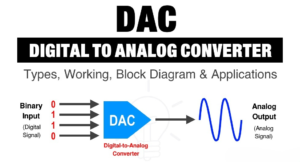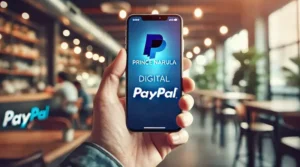As a Digital Creator, I find central bank digital currency (CBDC) to be a fascinating and significant topic in today’s financial discussions. One standout example is the FedNow Central Bank Digital Currency, currently under exploration by the Federal Reserve in the United States. In this article, we’ll dive into the specifics of the FedNow CBDC, examining its importance and the potential shifts it might bring to the financial terrain.
What is a Central Bank Digital Currency?
Before discussing the specifics of the FedNow CBDC, it is essential to understand the concept of a central bank digital currency. A CBDC is a digital form of fiat currency issued by a country’s central bank. It functions as a legal tender, backed by the full faith and credit of the government. Unlike cryptocurrencies like Bitcoin, a CBDC is centralized and regulated by the central bank.
The Significance of FedNow CBDC
Improving Payment Systems
One of the primary goals of the FedNow CBDC is to enhance the efficiency and accessibility of payment systems in the United States. The current payment infrastructure often faces limitations in terms of speed, accessibility, and availability. The introduction of a digital currency by the Federal Reserve aims to address these challenges and provide a faster and more inclusive payment mechanism.
Real-Time Payments
The FedNow CBDC is designed to enable real-time payments, allowing individuals and businesses to transfer funds instantly. This has the potential to revolutionize the way transactions are conducted, eliminating the need for intermediaries and reducing settlement times significantly. Real-time payments can enhance financial inclusion and support economic growth.
Increased Financial Inclusion
One of the key advantages of a CBDC like the FedNow is its potential to promote financial inclusion. By providing a digital currency that is accessible to all individuals, including the unbanked and underbanked populations, the FedNow CBDC can help bridge the financial divide and ensure that everyone has access to secure and convenient financial services.
Enhanced Security and Privacy
The FedNow CBDC can offer enhanced security and privacy features compared to traditional payment methods. With built-in encryption and advanced security protocols, digital currencies can provide a more secure and tamper-proof payment system. Additionally, the use of CBDCs can enable individuals to have greater control over their financial data and privacy.
Challenges and Considerations
While the FedNow CBDC holds significant promise, there are also challenges and considerations that need to be addressed. These include:
Technology Infrastructure
Implementing a central bank digital currency requires a robust and scalable technology infrastructure. The Federal Reserve needs to ensure that the necessary systems and protocols are in place to support the widespread adoption of the FedNow CBDC.
Regulatory Framework
The introduction of a CBDC also necessitates the development of a comprehensive regulatory framework. This framework should address issues related to consumer protection, anti-money laundering (AML) measures, and cybersecurity.
Interoperability
To maximize the benefits of a CBDC, interoperability with existing payment systems and digital currencies is crucial. The Federal Reserve needs to work closely with other financial institutions and regulatory bodies to ensure seamless integration and interoperability.
Public Trust and Acceptance
The success of a central bank digital currency depends on public trust and acceptance. The Federal Reserve needs to communicate the benefits and safeguards of the FedNow CBDC effectively to gain public confidence in its use.
FAQ: FedNow Central Bank Digital Currency
Q: What is the FedNow Central Bank Digital Currency (CBDC)?
A: The FedNow CBDC is a form of digital currency being explored by the Federal Reserve in the United States. It’s designed to be a digital representation of the US dollar issued and backed by the central bank.
Q: How does the FedNow CBDC work?
A: The specifics of the FedNow CBDC are still under development, but it is expected to function similarly to other forms of digital currency. Individuals and businesses would likely be able to hold, transfer, and make payments using FedNow CBDC through digital wallets or other approved platforms.
Q: What are the goals of introducing the FedNow CBDC?
A: The Federal Reserve aims to improve the efficiency, security, and accessibility of payments by introducing a digital form of the US dollar. Additionally, the FedNow CBDC could potentially enhance financial inclusion by providing more people with access to digital financial services.
Q: How will the introduction of the FedNow CBDC impact the financial landscape?
A: The introduction of the FedNow CBDC could lead to various changes in the financial landscape. It could potentially reduce the reliance on physical cash, streamline payment processes, and foster innovation in financial services and technology.
Q: Will the FedNow CBDC replace physical cash and traditional bank accounts?
A: It’s unlikely that the FedNow CBDC will completely replace physical cash or traditional bank accounts in the near future. Instead, it’s expected to complement existing forms of currency and financial infrastructure.
Conclusion
The FedNow Central Bank Digital Currency has the potential to revolutionize the payment landscape in the United States. By providing real-time payments, enhancing financial inclusion, and improving security and privacy, the FedNow CBDC can pave the way for a more efficient and accessible financial system. However, challenges such as technology infrastructure, regulatory frameworks, interoperability, and public trust need to be addressed for the successful implementation of a CBDC. As the Federal Reserve continues to explore the possibilities, the future of the FedNow CBDC holds significant promise for the financial industry.








Be First to Comment